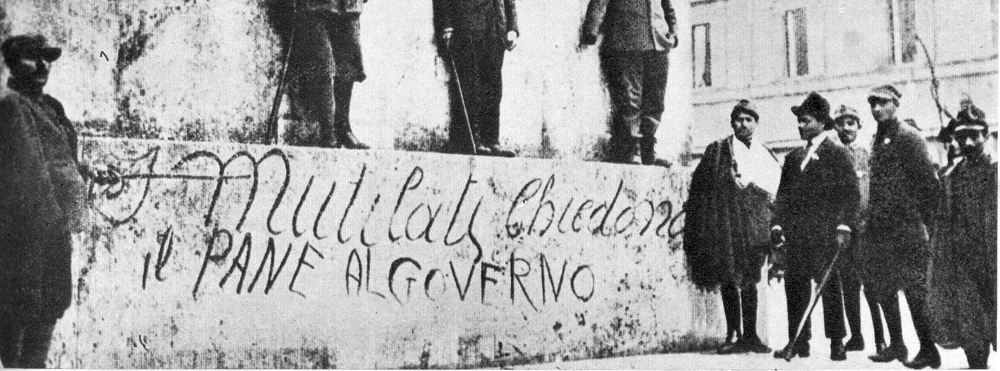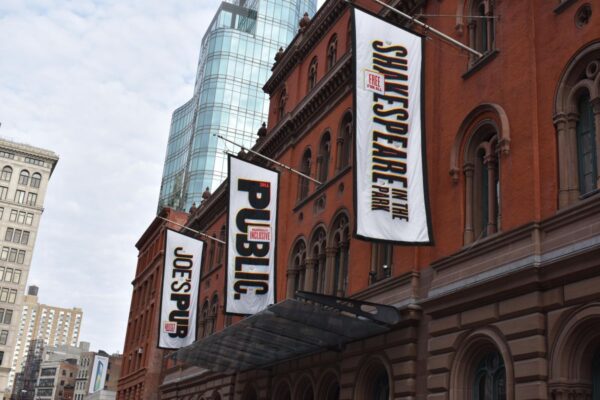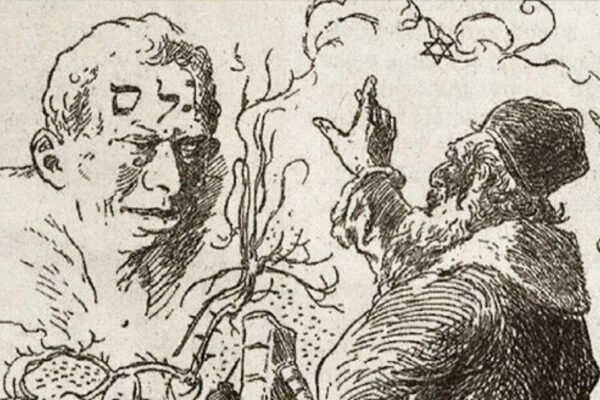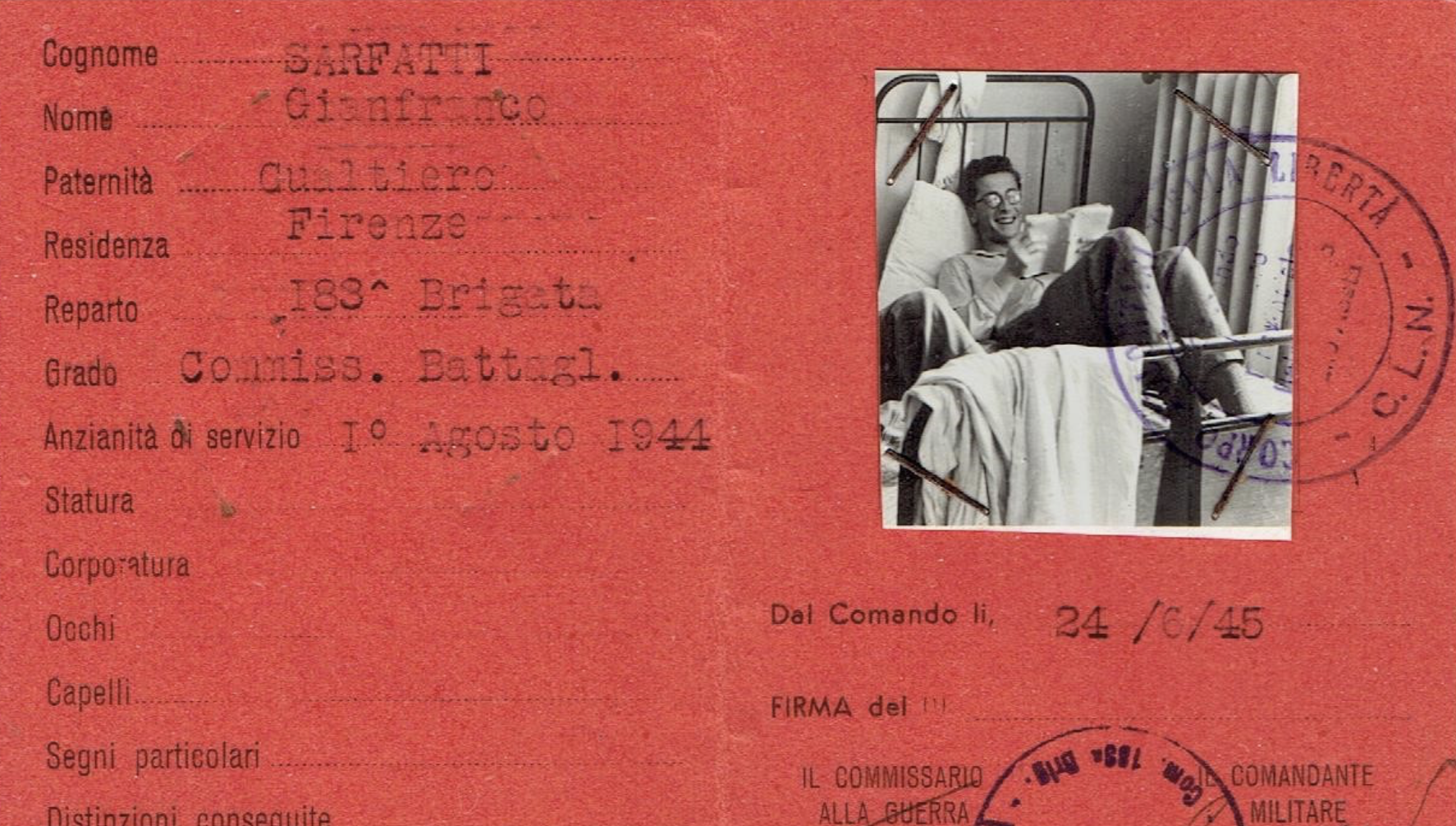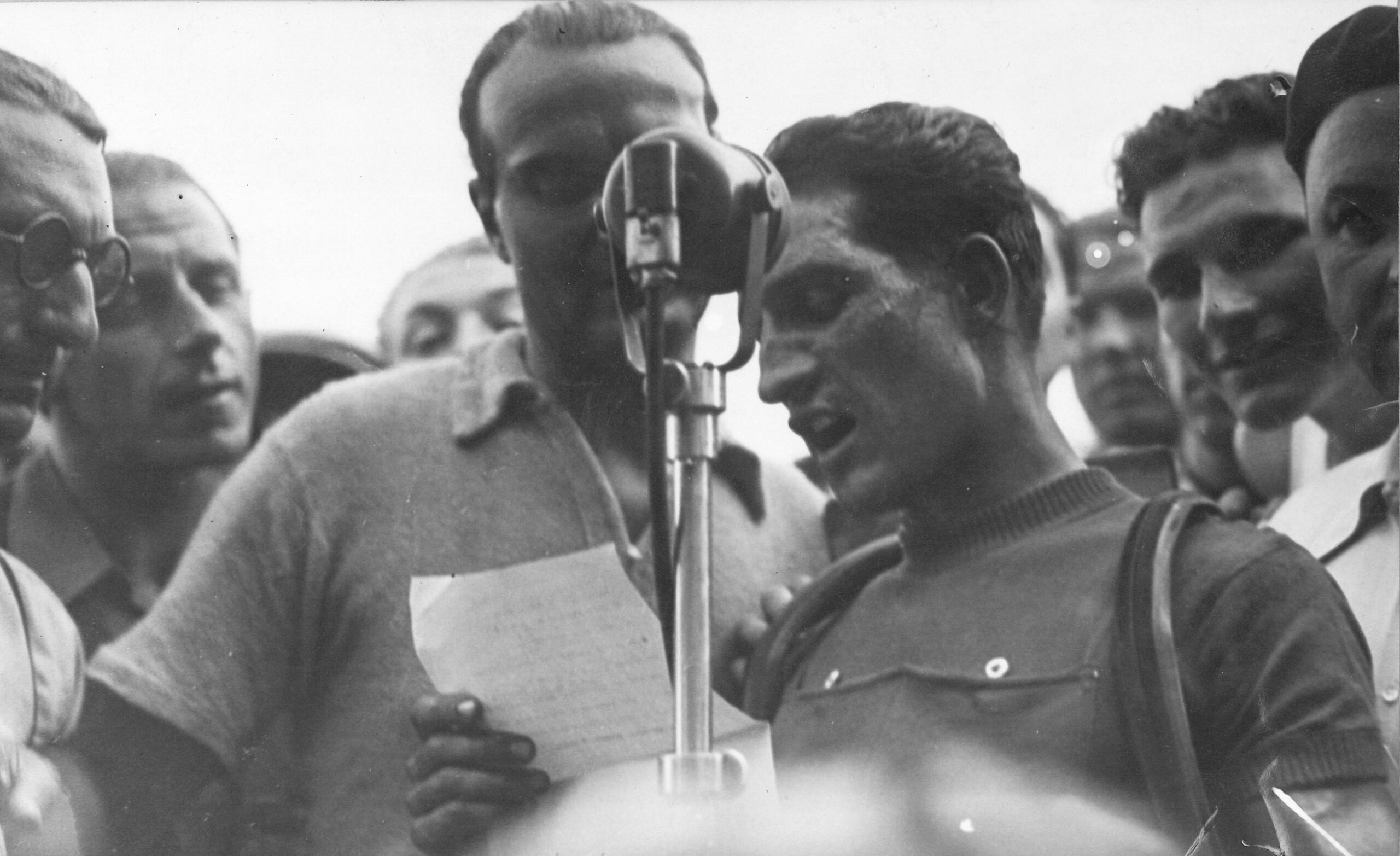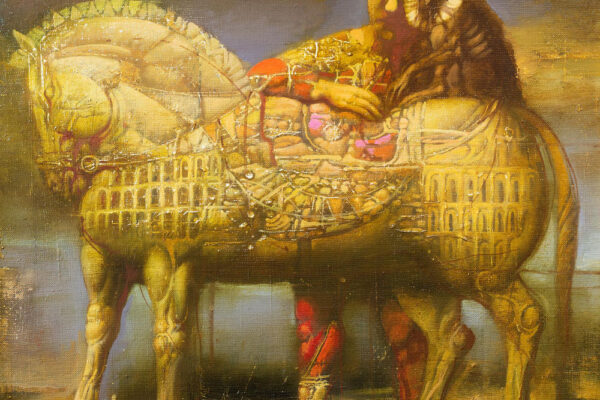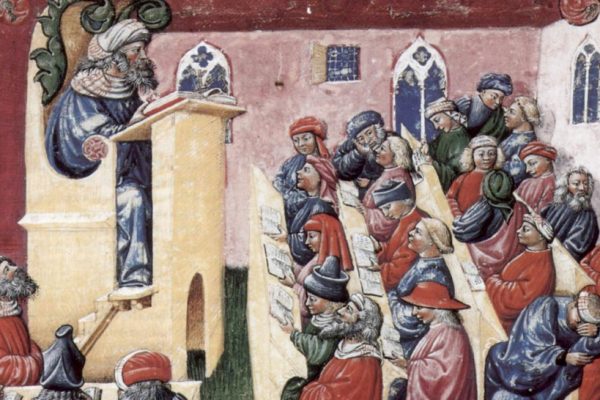This paper was delivered on June 2 at Casa Italiana Zerilli Marimò NYU on the occasion of Italian National Day and the 90th Anniversary of Matteotti’s murder
The murder of Giacomo Matteotti on June 10, 1924—and the events following it—solidified Benito Mussolini’s dictatorship. Even though his government between the March on Rome on October 28, 1922 and the elections of April 6, 1924 rested on the support of non-Fascist parties, Mussolini had taken control of the country through violence. The Matteotti crisis arguably gave opponents the best opportunity to overthrow the Duce that they had during his twenty-year tenure, but it failed to do so. One of the enduring mysteries of Fascist Era is the role Mussolini had in the murder. There is no doubt that Mussolini created the atmosphere in which the murder took place, but he always denied any direct role in the killing, arguing that only his worst enemy could have dreamed of murdering his most vocal opponent and causing him so much trouble. No “smoking gun” ever appeared, but Mauro Canali has made a good case for Mussolini’s direct intervention.[1]
This essay puts Giacomo Matteotti into context by discussing his ideological background—the reformism that gave him his passion and his faith.
Reformist Ideology
The term “spiritual son” of Filippo Turati is frequently used to describe Matteotti, who served as the Secretary of the Partito Socialista Unitario (PSU), and in fact, it was Turati who identified his remains. The product of the unfortunate schisms that struck the Partito Socialista Italiano (PSI) during the biennio rosso and the Fascist rise to power, the PSU embodied the reformism that Turati had been preaching in Italy since the late 1880s.
The PSI had been born stamped with Turati’s reformist ideology. Turati arrived at socialism through his humanitarianism and philosophical positivism, but by the time he founded the Socialist Party with his companion Anna Kuliscioff in the 1890s, his socialism had become “scientific” and Marxist, but without the violence that marked leftist Socialist rhetoric. He argued that socialism could only come about through a slow, peaceful, transformation of capitalism, not violence. “The revolution,” he wrote, “when it erupts into violence, denies itself wholly or in part and confesses its own weakness because it must fight and crush [others]…at the risk of shattering itself and deviating from its goal.”[2] According to Turati, Socialist ideas must spread peacefully until they permeated society. For him, the revolution would be a spiritual one involving intensive preparation to spur the evolution of society, and he condemned Socialists who preached violence and the “dictatorship of the proletariat.” The revolution would come only when it had evolved from bourgeois society, and its hallmark would be either a minimum of violence or even its absence.
Turati’s concept of evolution played a crucial part in his analysis of the proletariat’s role in the coming of socialism. Because it was impossible to improvise a Socialist society, it was not even desirable for the Italian workers to achieve power immediately.[3] Having absorbed bourgeois norms and culture over the decades, Turati wrote, “The proletariat has the enemy which it confronts externally also within itself. The proletarian must strip himself and jettison the man who now exists. This does not come about in a day.”[4] To promise immediate and total satisfaction of proletarian goals through violence, Turati argued, demonstrated either fraud or ignorance. How could Socialists say that the Italian proletariat was politically unconscious and backward while at the same time demanding immediate power so it could lead civilization to new heights? This reasoning meant that a self-defined elite would have to take over leadership of the Socialist movement and force the proletariat to follow it against its own will; in other words, the dictatorship of the proletariat led directly to an oligarchic principle within socialism in which workers would be forced to support what intellectuals believed constituted socialism. This was Turati’s constant refrain, and he used it against the Communists after 1917; the dictatorship of the proletariat logically produced a dictatorship against the proletariat itself.[5] In addition, he argued against violence not only because it would not lead to revolution, but also because it would lead to a violent struggle that the proletariat would certainly lose. It would produce a violent backlash that would destroy the Socialist movement for fifty years, something that came true with a vengeance with fascism.
What was to be done? Turati never subscribed to the illusion of many Marxists that capitalism would quickly collapse, thus generating resentment when it did not. The road to socialism would be a gradual one. The basic cause of socialism was the increasing industrialization of society, a gradual development about which individuals and parties could do little. A corresponding moral growth accompanied the slow transformation of society’s basis, to which corresponded “a transformation and elevation…of the thinking, the habits, and the capacities of the proletarian masses.” This transformation would not occur automatically or mystically but by means of reforms and the constant exercise of existing rights. This fact provided a guide to everyday action, which the PSI spelled out in its minimum demands for social legislation.[6]
The party must train the workers to exercise political power by moving toward the conquest of bourgeois institutions immediately. To succeed, the Socialists had to resist all attempts by reactionary elements of the bourgeoisie to restrict freedom of association, speech, voting, and the press—in other words, to discard its own constitutions. Given the Italian political situation, resistance to reaction could be successful only through cooperation with liberal bourgeois elements concerned with protecting the same rights that were necessary for the eventual triumph of socialism. At a time when Marxists condemned such cooperation, Turati argued strenuously that they should foster collaboration without troubling themselves that alliances were “unorthodox” and dangerous because the bourgeoisie supposedly constituted a “single reactionary mass.” Turati argued that this position was illogical and had been disproved by experience.[7] The experience to which Turati referred consisted of the successful Socialist fight against the reaction of the Crispi period from 1895-1896 and in the more serious reaction of 1898-1900 in alliance with liberal bourgeois groups. He remained consistent on this point and advocated it in the struggle against fascism after 1920. In this case, however, the Socialists and their Communist offshoot rejected his advice and lost the battle against fascism.
Reformist Action
Socialist revolutionary critics would charge, sardonically, that the reformists could not claim credit for the smallest reform, to which the reformists answered that they could not point to having achieved the smallest revolution, but now is a good time to look at reformist action.
Under the auspices of Turati, Kuliscioff, and their group, the PSI came into being in October 1892. It was not an easy task to found a socialist party in Italy because the Anarchists were heavily involved in the workers’ movement, and they fought strenuously against the creation of any organized party for the workers. In addition, prominent Marxist intellectuals—primarily Antonio Labriola—argued that Italy was not ready for a Marxist Socialist party. Turati created several organizations and corresponded with Friedrich Engels on the question of whether Italy had developed—in Marxist terms—to the point that a Socialist party could be formed, and finally succeeded in establishing one.
Despite the interpretation of some historians that this party was revolutionary and that Turati later turned against this policy, it clearly was born reformist. As hammered out by Turati, the PSI’s constitution emphasized two essential reformist elements that served as guides for action—and they are reformist. They are:
- The struggle of the occupations for the immediate improvement of working-class conditions [hours, salaries, factory rules, etc.], a struggle which is to devolve upon the chambers of labor and other labor associations.
- A wider struggle having as its goal the conquest of public power [state, commune, public administrations, etc.] in order to transform them from the tools of oppression and exploitation they are today into instruments of economic and political expropriation of the dominating class.[8]
We can consider the period between 1892 and 1900 as one of consolidation. The government dissolved the party, but it reconstituted and reorganized itself and adopted a new name (the term “Partito Socialista Italiano” became official in 1895). It rooted itself in Italian society, especially the North. And it conducted two hard-fought and successful battles to preserve the Italian constitution and liberty, one against Francesco Crispi (1895-1896) and the other the right and Luigi Pelloux (1898-1900). In both these fights, internal cracks appeared over the question of whether or not the Socialists should ally with liberal elements of the bourgeoisie in order to contest the reactionary policies of the government. As usual, the left wing of the PSI argued that the bourgeoisie constituted a “single reactionary bloc”; for that reason all its elements were reactionary and it was useless to collaborate with them. Turati strenuously argued against this view. In both cases he won and reformist Socialist policy was a main reason the Italian constitution was maintained and that a liberal government under Giovanni Giolitti and Giuseppe Zanardelli was formed in 1901.
Having won those battles, the question of whether collaboration with liberal elements to gain reforms should continue in non-emergency situations appeared with a vengeance once the Socialists had eliminated the mortal threats. Reformists believed that measures that changed society slowly led the way to socialism, but left wing revolutionaries advocated violent revolution. They argued that the bourgeoisie would agree to reforms when it suited that group, but would resist reforms that would actually change society. The reformists countered that at least part of the way to socialism could be travelled together with liberal bourgeois groups.
In 1901, a major test of these positions took place. The question was whether the Socialist deputies should vote for a cabinet headed by liberals Giuseppe Zanardelli and Giovanni Giolitti (as Interior Minister). Socialist support for this government was determinant: had the deputies not voted for it, in all likelihood Sidney Sonnino would have become Prime Minister. Sonnino was the bête noire of the Italian left, which believed that he had been the moving force behind the reaction of 1898-1900. On May 29, 1901, the Party Directorate met and ordered the deputies not to vote for the government, leaving them free to support single measures.[9] Turati ridiculed this solution—known as the caso per caso policy—considering it superficial and pernicious: Socialists could vote for all government measures but had to vote against it in a vote of confidence.[10] The Socialist deputies debated the issue at length following this decision; Turati’s position won out and the deputies decided to give the government a confidence vote despite the Directorate’s order.[11]
Because the deputies openly defied the Directorate’s orders and voted for the cabinet, and because a few days later soldiers fired into a crowd of striking workers at Berra (Ferrara), the stage was set for a dispute between reformists and revolutionaries of different stripes that lasted from that time on within the PSI and greatly weakened it. In the ensuing Socialist congresses, control seesawed back and forth between the two groups, with the reformists having the advantage until the Libyan War broke out in 1911. The war produced a backlash against the reformists, a split in the reformist ranks, and a reformist defeat at the Congress of Reggio Emilia in 1912. At this congress, a rising revolutionary star appeared as the major opponent of reformism: Benito Mussolini.
At this point it might be beneficial to pause and consider what the reformists accomplished during the early years of the new century. Between 1901 and 1903, the Zanardelli-Giolitti cabinet—beholden to Socialist support—gave up on the common practice of using soldiers to break strikes by deploying the army to do the work of strikers, especially in agriculture. The government’s withdrawal from strikebreaking encouraged strikes, especially on the land, where they had been rare. Newly formed Socialist agricultural leagues took the lead in this movement. Whereas in 1900 there had been 27 agricultural strikes with 12,517 participants, in 1901, 629 strikes involving 222, 895 strikers took place.[12] Wages on the land took a leap forward, as might be expected. Later a backlash took place because in 1903, revolutionary opposition to the reformists mounted in the Party and the strike movement challenged public transportation, which forced the government to act against it.
Meanwhile, the Zanardelli government pledged to embark on a program of tax reduction and to temper the tax burden, which fell unequally on the South. This plan fell short because of the high arms expenditures during a time that the Europeans were increasing their armed forces. Given the country’s poor economic situation, Italy spent more per capita on arms while being able to maintain the smallest army. The Socialists opposed increased arms spending, and the government managed to stabilize it. In the domestic arena, the reformists had greater influence on policy. The number of successful strikes rose dramatically as workers’ learned how to organize themselves. The number of agricultural leagues increased and by the end of 1901 they united as the National Federation of Land Workers representing 227, 291 members, more than any industrial union. In the North, the industrial workers also organized. The Metalworkers’ Union (Metalmeccanici) appeared as a permanent fixture on the Italian scene. In Milan, the reformists organized the Postal Workers’ Union, which enthusiastically chose Turati as its president. Within a year, it counted 10,000 members. The number of Chambers of Labor also increased, from 19 to 58 in a year. In 1902 and 1903 under the reformist Socialist deputy Giovanni Montemartini, a Labor Office and the Superior Council of Labor were formed to collect statistics and to suggest specific legislation to alleviate the poor working conditions of Italian workers. These offices were the forerunners of the Ministry of Labor established later. The Chamber of Deputies passed legislation providing for or extending old age, sickness, accident insurance, and maternity benefits. Turati and Kuliscioff organized rallies to pressure Parliament to pass a Turati-sponsored measure to protect women and children from industrial hazards. Three hundred rallies were held on a single Sunday, and for the first time workers intervened directly, systematically, and successfully to support a bill pending in Parliament rather than randomly rioting. The Chamber also adopted legislation protecting emigrants, aiding malaria-and-pellagra-stricken areas of the country, promoting land reclamation, and instituting a medal honoring labor. The government even tackled the age-old problem of the South. That the 76-year old Prime Minister Zanardelli would visit the South with its scant infrastructure and travelling in ox-drawn carts impressed the nation.
The government then sponsored measures to extend long-term credits, provide tax relief, and encourage the construction of aqueducts, roads, and rail lines in the South. Given the enormity of the “southern problem” and the country’s poor resources, it was not nearly enough to solve the problem, but it was a beginning. According to one deputy it was more than had been done in forty years.[13] In 1906, reformists successfully fought the opposition of the left wing and established the first national trade union, the Confederazione Nazionale del Lavoro, which quickly grew to 300,000 members and had a vital role in the nation.[14] Historian Gioacchino Volpe confirmed Turati’s intentions when he wrote that the political education of the workers really began during this period.[15]
A detailed description of the divisions between reformists and revolutionaries that continued during the early years of the twentieth century would take us too far afield. Suffice it to say that these battles were difficult and frequent, and obstructed the work of the reformists. These divisions and the extension of strikes into the crucial area of transportation encouraged government intervention and slowed down the pace of the reform movement, which had become too hot even for the reformists to sustain. Finally, the Libyan War’s outbreak favored a backlash that ended reformist control and split the faction as well.
Reformism and Fascism
The split that occurred at the 1912 congress marked a profound change in Socialist and Italian history. Mussolini had an important role and, at his instigation, the delegates expelled important Socialist reformist leaders including Leonida Bissolati and Ivanoe Bonomi (the “right reformists”) because they had supported, or had not sufficiently opposed, the Libyan war. Although he was the most vocal, the future Duce was not the leader of the revolutionaries, and its most prominent members (e.g. Giovanni Lerda) frowned on him and opposed his efforts to become editor of Avanti!. Mussolini soon gained this position, however, and used it to achieve national prominence and to move Socialist action into the streets, the development Turati had most feared. Mussolini egged on the crowd to violence, scorning all peaceful methods of increasing Socialist influence. Turati’s reformists repudiated Mussolini but failed to dislodge him as he gained even more strength against his erstwhile revolutionary allies at the Congress of Ancona in April 1914. In June 1914, Mussolini instigated “Red Week,” a serious revolutionary movement that took place in the Emilia-Romagna. “Mussolinismo”—the attainment of power by demagogic appeals to the mob—became entrenched in the Socialist Party and, fueled by the Great War and the Bolshevik Revolution in Russia, produced the rhetoric of the “biennio rosso” of 1919-1920.
The ironic result of “Mussolinismo” was that the failure of “Red Week” convinced Mussolini that the Socialists would never come to power using Marxism as a guide. Revolution in and for itself because paramount for him, but “Mussolinismo” would remain a fixture of the PSI, even without Mussolini.[16]
On August 2, 1914, Italy declared its neutrality in World War I. The country’s top leaders later engineered Italy’s entrance into the war on May 23, 1915. By then, Mussolini had become convinced of the war’s revolutionary potential, had reversed his original neutralism, and had been expelled by his party. The strains produced by the First World War and the myth of the Bolshevik Revolution pumped up the left wing—now dubbed “maximalists”—and greatly decreased reformist influence. In 1919, against reformist protests, the Congress of Bologna rejected all collaboration with any part of the bourgeoisie and called for violent revolution on the Bolshevik model. Turati had predicted that if the Socialists chose the road of violence against the bourgeoisie, they would lose the fight, and that is what happened. Led during this period by Giacinto Menotti Serrati, the Socialists acted almost as if they would automatically achieve power if they preached violence. They proved much less skilled at using violence than their bourgeois opponents. Mussolini, the former Socialist revolutionary, had now changed sides and became the instrument of violence against them.
Mussolini had created a new movement imbued with violence, called fascism. The Socialists who preached violence were unable to contest his violence but, despite this, continually rejected reformist calls to collaborate with bourgeois elements that might have made a difference in stopping fascism. In short, they rejected the method that had been successful in past reactionary onslaughts in Italy and, in a suicidal move, just managed to expel the reformist component from the PSI.[17] By October 1922—as the Fascists prepared to march on Rome—this component had grown to about half the party membership as more Socialists came to understand the grave errors of the PSI’s maximalist leadership. At this point, the elder statesman of Italian reformism and his spiritual son—Filippo Turati and Giacomo Matteotti—formed the Partito Socialista Unitario and went their own way. Matteotti’s opposition to Mussolini cost him his life, and Turati’s resistance forced him into exile in 1926. In Paris, he continued to lead the fight against fascism. A Cassandra until the end, Turati struggled to make Europe and the European Socialists take fascism seriously—trying to make them understand that it was not some peculiar Italian phenomenon that would forever be confined to a supposedly backward country.[18] He died on March 29, 1932, when it unfortunately became clear that he had been right once again.
[1] Mauro Canali, Il delitto Matteotti (Bologna: Il Mulino, 2004). [2] Filippo Turati, “Rivolta e Rivoluzione,” Critica Sociale, 16 June 1893. [3] La Critica Sociale, “Necessita` di Un Programma Pratico,” Critica Sociale, 1 August 1892. [4] Filippo Turati “Dove Andiamo?” Critica Sociale, 16 October 1892. [5] Turati’s speeches against maximalism and communism after World War I are replete with such explanations. See, for example, his speeches to the Socialist congresses of Bologna (7 October 1919) and Livorno (19 January 1919), both in Filippo Turati, Le vie maestre del socialism (Naples: Morano, 1966). [6] Filippo Turati, Il partito socialista e l’attuale momento politico (Milan: Critica Sociale, 1901), pp. 3-5. [7] Ibid., p. 6. [8] Gastone Manacorda, Il movimento operaio italiano attraverso I suoi congressi (1853-1892) (Rome: Riuniti, 1953), pp. 322-24. [9] Partito Socialista Italiano, Relazione della Direzione del partito (Imola: Coop. Tip. Ed., 1902), pp. 16-21. [10] Filippo Turati, “Il caso per caso e i ‘casi’ di Milano,”Avanti!, 24 August 1901. [11] The story can be found in detail in Spencer Di Scala, Dilemmas of Italian Socialism: The Politics of Filippo Turati (Amherst, MA: University of Massachusetts Press, 1980), p. 56-57. [12] Ministero di agricultura, industria e commercio, Direzione generale della statistica, Annuario Statistico Italiano, 1904 (Rome: Tip. Nazionale di G. Bertero, 1904), p. 367. [13] Di Scala, Dilemmas, pp. 62-66. [14] For the story, see Ibid., pp. 89-99. [15] Gioacchino Volpe, “Partiti politici e contrasti sociali in Italia all’inizio del nuovo secolo,” Nuova Antologia 441, no.1764 (December 1947): 338. [16] Spencer Di Scala, “‘Red Week’ 1914: Prelude to War and Revolution,” in Frank J. Coppa, ed., Studies in Modern Italian History from the Risorgimento to the Republic (New York: Peter Lang, 1986). [17] The numbers were so close that the maxiamalists managed to expel the reformists only with the temporary help of a ephemeral faction—the “thirdinternationalist”—that wanted to have the PSI join the Third International even though it could have joined the Communist Party of Italy, whose members split from the PSI in 1921. [18] For details, see Spencer Di Scala, Renewing Italian Socialism: Nenni to Craxi (New York: Oxford University Press, 1988), pp. 3-11.


